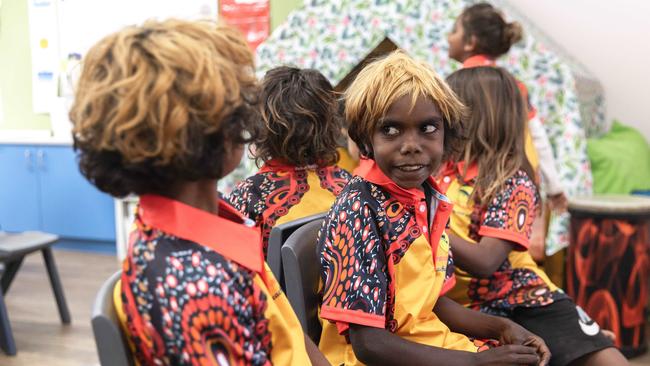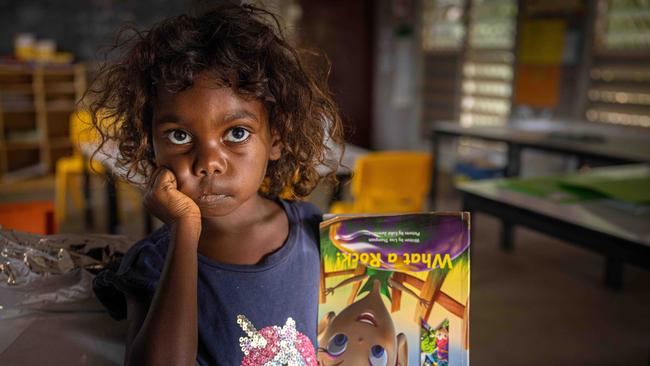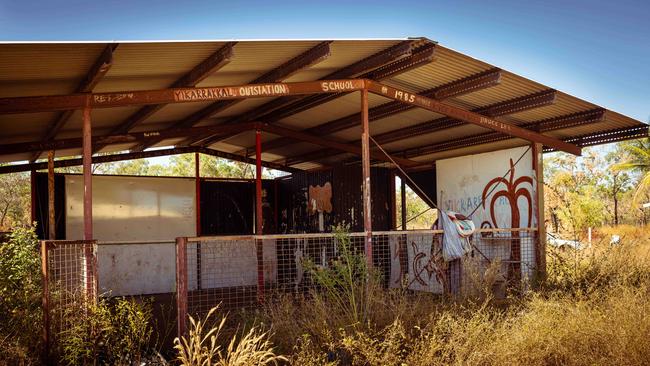NT schools in crisis: Security and prospects take toll
Attendance rates at remote Northern Territory schools are as low as 18.7 per cent and have been falling for a decade.

Attendance rates at remote Northern Territory schools are as low as 18.7 per cent and have been falling for a decade.
Forty-six Territory schools had an attendance rate below 50 per cent this year and the overall attendance rate of 73.4 per cent has fallen from 81.7 per cent in 2014.
According to the latest data, which reflects term-two attendance, the lowest rates were concentrated in remote schools (68.3 per cent) and very remote schools (48.2 per cent).
Despite a slight increase in NT attendance rates this year, Indigenous attendance rates since 2014 have dropped from 68.2 per cent to 57 per cent.
According to the Australian Curriculum, Assessment and Reporting Authority (ACARA), school attendance nationally has been in decline, with a sharper drop from 2021. However, the NT has substantially lower school attendance (73.4 per cent) and Indigenous attendance (56.4 per cent) than the national 2022 average (86.5 per cent) and national Indigenous average (74.5 per cent).
NT: Schools in crisis

The shocking state of NT education
If the students at Gamardi are lucky, a teacher will turn up two days a week. For whole months, nobody comes. And then there is the sorry excuse for a classroom. ‘If this was happening in an urban setting, they’d sack the government on the spot.’

Kids fall off the money-go-round
While lush lawns and gardens welcome students inside Alyangula, less than 20km away, Angurugu’s imposing gates present a bleak, very different picture.

Schools short-changed by millions
An analysis of Northern Territory schools most affected by underfunding shows all but three had an Indigenous student population of more than 95pc and were remote.

Security, prospects take toll at schools
Attendance rates at remote Northern Territory schools are as low as 18.7 per cent and have been falling for a decade.

Scandal of the nation’s forgotten schoolkids
The NT school system is failing students by leaving at least one in five effectively unfunded, offering an education so bad that most fail minimum literacy and numeracy standards.
NT Education Minister Eva Lawler acknowledged one of the biggest challenges in remote education was getting children to school.
“Every region and every school has a specific program in place tailored to the school in order to increase student attendance and engagement. This year across the NT we have seen a 2.2 per cent increase in student attendance,” she said.
The government employed 50 student engagement officers across the Territory, and had a range of other programs and initiatives, including a student engagement hotline and collaborations with a range of youth outreach and re-engagement teams.
The reasons behind low attendance are complex and vary significantly from one community to another.
At Angurugu School on Groote Elyandt, 650km east of Darwin, locals say attendance has plummeted since the death of a 10-year-old student in 2021. A teacher was driving Jayeldon Mamarika and several other students home from an excursion 20km away at Alyangula when the car rolled while the teacher was doing fishtails. As a result, many local families said they no longer felt it was safe to send their children to the school.
The Australian understands that some students in Angurugu haven’t attended school for up to two years. Others are attending the neighbouring school in Alyangula.
Groote Eylandt Bickerton Island Primary College Aboriginal Corporation education manager Josie Skelton, who has worked in many remote schools, said cultural safety was as important as physical safety in keeping children and their families invested in schooling.
“You’ve got to make it feel safe,” she said. “If they need to come in [to school] and sleep, they need to come in for a sleep. Don’t ring up [their parents] and say they need to go home because they’re just sleeping. Well, they feel safe enough to sleep.”
Central Queensland University First Nations Studies manager and academic lead Gary Fry, a former NT principal and teacher and Dagoman man, said poor job markets nationally were also a barrier to engaging students. He said education had to offer “real value” to students.
“There are many non-Indigenous children who are reaching an existential point of crisis, like finishing school, and there’s nothing for them,” he said. “And so for First Nations families, you know, that existential crisis is real.”
Mike Tucker, the principal of Nyangatjatjara College, a small independent secondary school near Yulara 450km southwest of Alice Springs, said a lack of job prospects made it easier for teenagers to disengage from schooling.
“You’ve got to see the whole picture,” he said. “If you’re in a community where unemployment is at 80 per cent and there are 15 jobs in the community, potentially 200 people there, the opportunity of getting a job is pretty much nil. So what’s the point in going to school?”
Former senior public servant Bob Beadman, who worked with the federal department of Indigenous Affairs, said welfare payments had contributed to disempowering communities, and often discouraged people from working, which had a flow-on effect in schools.
“The consequences of [welfare] are kids have never seen either parent working,” he said. “They say, ‘there’s no point in us going to school, we don’t have to, the government will keep us for life too’.
“It’s a ludicrous situation. It continues generation after generation now since the middle 1970s and the outcomes have deteriorated ever since.”
Children not attending school can often be the result of something simple, too, says Kalkarindji’s Ngaliwany Purrp’ku Family Centre manager Quitaysha Thompson.
Ms Thompson works with the area’s Remote School Attendance Strategy team. RSAS programs run in many communities throughout the Northern Territory and work in partnership with schools and families to increase attendance.
“Parents may say ‘my kids don’t have clean clothes’, so the RSAS team are there to provide them with school uniforms,” she said.
“Some of our families, they don’t have a fridge in their homes, or they don’t have a pantry full of food. That’s why we introduced a school breakfast program on the bus. Things like face wash, hairbrush. They can do [that] on the bus on the way to school.”
Although critics of these schemes say they absolve parents of responsibility, communities like Groote and Kalkarindji report these tactics have helped boost attendance rates.
Andrea Goddard, the chief executive of Stars Foundation, a mentoring program for female Indigenous students, said low rates of attendance in remote and Indigenous communities were also a reflection of “universal issues of poverty and disadvantage”.
“The individual barriers some of our students experience include lack of transportation – they can’t get to school because they live too far away, and there’s nobody to take them,” she said.
“For many of the students, there’s overcrowding in houses. They might not feel like their house is a safe place. Sometimes lack of sleep is a massive barrier for students.”
Aboriginal and Torres Strait Islander Social Justice Commissioner and Bunuba woman June Oscar said that falling Indigenous attendance rates nationally were also a sign of the Australian education system’s failure to meaningfully engage with local culture.
Christine Ross, a former teacher and Arrernte and Kaytetye woman, says that “so much” of the Australian curriculum was not relevant to Indigenous students. “At the end of the day, the curriculum in this country is designed for white middle-class kids. Not our kids,” she said.
At independent schools such as Yiprinya in Alice Springs there is the freedom to mould curriculum around the students, with language and culture incorporated in all lessons. There are also specialist teachers who visit the school regularly, including local musician Peter Lowson, who leads drumming classes across several grades.
“I teach basic rhythm so they can pick up almost any instrument,” he says of his popular lessons, which are a factor in building attendance and engagement, too. “It teaches timing in life. It teaches them to observe. And it’s good therapy.



To join the conversation, please log in. Don't have an account? Register
Join the conversation, you are commenting as Logout